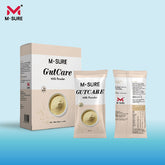Practical exercise recommendations for maintaining health
by
BiotechAusway
30 Oct 2025
1. Aerobic Exercise Guidelines
• Frequency: Aim for ≥150 minutes/week of moderate-intensity (e.g., brisk walking) or ≥75 minutes/week of vigorous-intensity (e.g., running) activity.
• Intensity: Use the "talk test"—moderate exercise should allow speaking in short sentences without gasping.
• Benefits: Reduces all-cause mortality risk by 18% per 10-point increase in activity quality score.
2. Strength Training
• Frequency: 2-3 sessions/week targeting major muscle groups.
• Example: Bodyweight exercises (push-ups, squats) or resistance bands for beginners.
• Key: Focus on progressive overload (gradually increasing weight/reps).
3. Flexibility & Balance
• Yoga/Tai Chi: 2 sessions/week improve mobility and fall prevention, especially for older adults.
• Stretching: Post-workout static stretches (hold 15-30 seconds) enhance recovery.
4. Activity breaks for sedentary individuals
• Micro-exercises: Every hour, take a 2-5 minute break for walking/stretching to counteract prolonged sitting.
• NEAT: Non-exercise activity thermogenesis (e.g., taking stairs) contributes to daily calorie burn.
5. Precautions
• Warm-up: 5-10 minutes of dynamic movements (arm circles, leg swings) reduce injury risk.
• Hydration: Drink water before/during exercise; avoid over-hydration.
• Medical clearance: Consult a doctor if you have chronic conditions (e.g., hypertension).
For personalized plans, consider consulting a certified trainer or physiotherapist. Consistency matters more than intensity—start small and build habits gradually.






